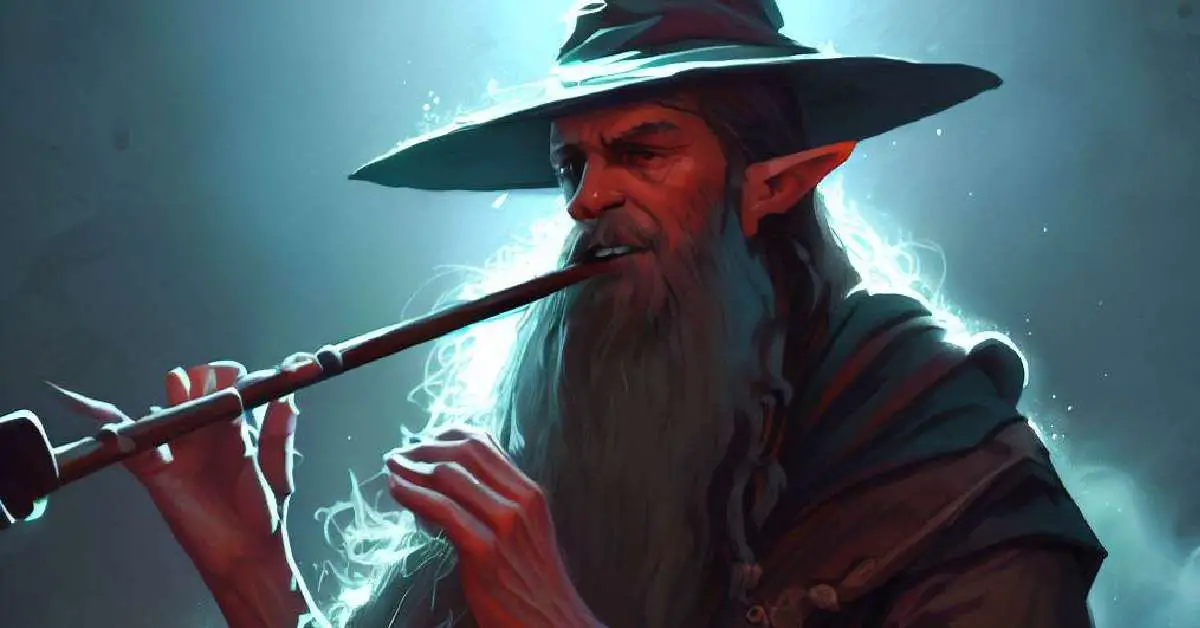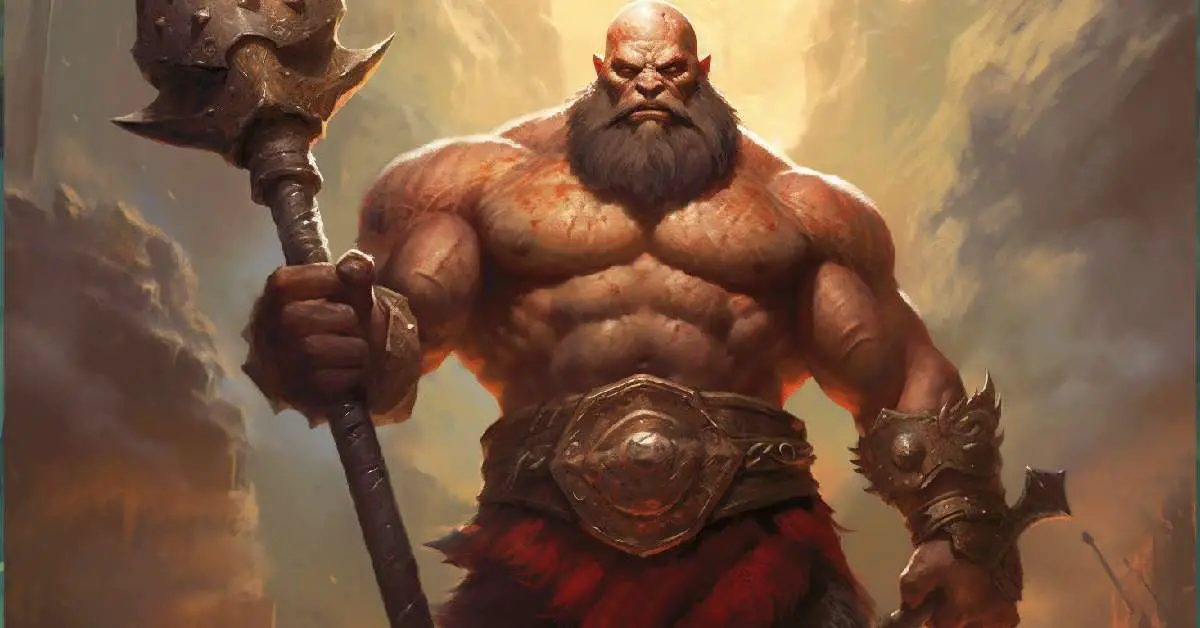
In the world of Dungeons & Dragons 5th Edition (5e), multiclassing allows for a plethora of creative character builds, combining the strengths of two or more classes. The wizard/bard multiclass, combining the arcane intellect of a Wizard and the musical magic of a Bard, is a particularly intriguing and powerful option. This article serves as a comprehensive guide to understanding, creating, and mastering such a character.
The multiclassing mechanic in D&D 5e offers a way to break free from the limitations of a single class, allowing your character to learn new skills and abilities that can drastically improve versatility and adaptability. This guide is designed to walk you through the complexities and possibilities of the Wizard/Bard multiclass, discussing why you might want to consider this combination, exploring the mechanics of multiclassing, delving into class features, and offering tips and advice on character building and gameplay strategy. So, let’s dive in, and let the magic of knowledge guide us through this arcane journey!
Why Multiclass as a Wizard and Bard?
Multiclassing as a Wizard and Bard in D&D 5e creates a versatile and formidable character, combining the depth of arcane knowledge from the Wizard class with the charismatic spellcasting and supportive abilities of the Bard class. This combination breaks away from traditional class archetypes and opens up a world of exciting role-playing and gameplay possibilities.
A wizard is known for their extensive spell repertoire and the ability to prepare a broad range of spells, making them incredibly adaptable in both combat and non-combat situations. Their spells can be tailored to the party’s needs, allowing them to fill various roles such as damage dealer, controller, or even support.
On the other hand, the Bard’s strength lies in their versatility. With the ability to pull spells from any class through the Magical Secrets feature, combined with their Bardic Inspiration ability, they can be a key player in bolstering the party’s effectiveness in combat. Bards also excel in social situations due to their high Charisma and wide range of skill proficiencies, which makes them adept at handling social interactions and performing in role-play scenarios.
When you combine the Wizard’s depth of arcane knowledge with the Bard’s versatile spellcasting and social prowess, you get a character that is not only versatile but also capable of handling a variety of situations with aplomb.
Requirements and Mechanics for Multiclassing
Embarking on a multiclassing journey in D&D 5e requires meeting certain prerequisites and understanding the mechanics that underpin this process. The first thing to consider when multiclassing into the Wizard and Bard classes are the ability score prerequisites. For the Wizard class, this requires an Intelligence score of 13 or higher, reflecting their reliance on vast knowledge and study. For the Bard, a Charisma score of 13 or higher is required, indicating their innate ability to charm and influence others through words and music.
Once these prerequisites are met, you can consider the mechanics of multiclassing. When you multiclass, you essentially start gaining levels in a new class, acquiring its class features and spellcasting abilities. You need to track your character’s overall level and individual class levels, as these determine your proficiency bonus and spellcasting capability.
An important mechanic to understand for spellcasting classes is the concept of spell slots. In the case of a Wizard/Bard multiclass, the character would use the multiclass spellcaster table in the Player’s Handbook to determine their total spell slots.
Moreover, multiclassing affects your character’s hit points, skill proficiencies, and saving throw proficiencies. For instance, when you take your first level in Bard, you gain proficiency in Dexterity and Charisma saving throws, and you acquire one or more new skills from the Bard’s list of class skills.
Class Feature Overview
The real excitement of a Wizard/Bard multiclass character lies in the blending of class features that offer a unique and compelling gameplay experience. Let’s dive into the core features of both classes and how they interact to shape your character.
Wizard Class Features
As a Wizard, your features are centered around your spellcasting, with an expansive spell list and the capability to learn and prepare a vast range of spells. One of the core features is your Spellbook, which allows you to inscribe and store all the spells you’ve learned, offering you a flexible way to prepare spells each day.
Another critical Wizard feature is Arcane Recovery, allowing you to regain some expended spell slots during a short rest, thus increasing your spellcasting endurance throughout the day. Additionally, at 2nd level, you choose an Arcane Tradition that shapes your magical studies, such as Evocation for damage dealing, or Abjuration for protection, each providing unique benefits and features.
Bard Class Features
Bards are charismatic spellcasters known for their versatile skills and supportive abilities. Bardic Inspiration is a core feature that allows you to inspire others with a bonus to their dice rolls, making a significant difference in crucial situations. As you level up, this feature evolves into the more potent ‘Superior Inspiration’.
At 2nd level, you choose a Bard College that further enhances your abilities and defines your bardic performance style, be it the College of Lore for those who collect tales and secrets, or the College of Valor for those who inspire their allies in battle.
Moreover, the Bard’s Magical Secrets feature allows you to learn spells from any other class’s spell list, granting you unmatched versatility in your spellcasting.
When combined, these class features provide a Wizard/Bard character with a wealth of spellcasting options, supportive capabilities, and versatile skills.
Building Your Wizard/Bard Character
Character creation is where the magic happens, and for a Wizard/Bard multiclass, it can be a thrilling exercise in creative decision-making. This section will offer guidance on stat allocation, choosing races and backgrounds, and selecting the right spells and abilities.
The key ability scores for a Wizard/Bard multiclass are Intelligence (for Wizard spellcasting) and Charisma (for Bard spellcasting and skills). Therefore, you should prioritize these scores during character creation. You might also want to invest in Dexterity for added Armor Class and Constitution for extra hit points, given the relative squishiness of both classes.
When it comes to race selection, any race that gives bonuses to Intelligence and/or Charisma would be beneficial. High Elves, for instance, gain a +1 bonus to Intelligence, and Half-Elves get a +2 bonus to Charisma and +1 to two other ability scores of your choice.
Background selection can further enhance your character’s skills and role-play potential. A Sage background, for instance, can emphasize the Wizard’s scholarly nature, while an Entertainer background could complement the Bard’s performance skills.
Spell selection for your Wizard/Bard character is where you can truly shine in terms of versatility. As a Wizard, you’ll have access to powerful control and utility spells like “Shield”, “Misty Step”, and “Counterspell”. As a Bard, you can pick supportive and control spells like “Healing Word”, “Dissonant Whispers“, or “Hold Person. With the Bard’s Magical Secrets, you can even cherry-pick powerful spells from other classes.
Finally, consider the order in which you take levels in each class. Starting as a Wizard provides more initial hit points, while starting as a Bard gives you more skill proficiencies.
Building your Wizard/Bard character is a matter of personal preference and party needs. This guide aims to provide a foundation for your decisions, but ultimately, your character should be a reflection of your imagination and playstyle.
Strategy and Gameplay
Strategy and gameplay for a Wizard/Bard multiclass are as diverse and complex as the class combination itself. This section will offer guidance on how to play your character effectively, both in combat and role-playing scenarios.
Combat Strategy
In combat, your character’s versatility truly shines. You have a wide array of spellcasting options at your disposal, and your role in the party can change dynamically according to the situation. If damage is required, your Wizard spell list contains powerful evocation spells such as “Fireball” or “Magic Missile”. If control is needed, you can deploy crowd control spells like “Hypnotic Pattern” or “Web”. For supportive roles, your Bardic Inspiration and healing spells like “Cure Wounds” or “Healing Word” can be invaluable.
Remember to use your Arcane Recovery feature as a Wizard to regain spell slots during short rests, maximizing your endurance in extended fights or adventuring days. Your Bardic Inspiration, meanwhile, can turn the tide in critical moments, providing bonuses to your allies’ attack rolls or saving throws.
Role-playing Strategy
Outside of combat, your Wizard/Bard multiclass character can be a central figure in role-playing scenarios. As a Wizard, your high Intelligence can make you the knowledge hub of the party, skilled in Arcana and potentially other knowledge-based skills. As a Bard, your high Charisma makes you a natural at social interactions. With the Bard’s skill versatility and features like Jack of All Trades and Expertise, you can fill in the gaps in your party’s skill set, becoming the go-to character for a variety of challenges.
The combination of Wizard and Bard also offers rich role-playing potential in terms of character personality and backstory. Perhaps your character was a Wizard who felt the call of music and performance, or a Bard who sought deeper magical understanding. The melding of arcane intellect and charismatic performance creates a unique and engaging character concept that can be a joy to role-play.
Sample Character Builds
Building a Wizard/Bard multiclass character is an art, and to illustrate the range of possibilities, here are a couple of example character builds.
The Arcane Maestro
The Arcane Maestro combines the Wizard’s mastery of arcane magic with the Bard’s musical skills to weave spells and songs into a mesmerizing performance. Starting with the Wizard class, this character prioritizes Intelligence and Charisma for potent spellcasting. They may choose the School of Enchantment for their Arcane Tradition, enhancing their enchantment spells and their ability to beguile and manipulate others.
As they progress, levels in Bard further enhance their Charisma-based skills and spellcasting. Choosing the College of Lore provides them with additional skills, cutting words to debuff enemies, and more Magical Secrets to diversify their spell repertoire. The Arcane Maestro is a crowd-controlling master, casting enchantment spells to manipulate foes and using their Bardic Inspiration to bolster allies, all while charming everyone with their captivating performances.
The Battle Sage
The Battle Sage is a character who uses their knowledge and magic to turn the tides of battle. Starting with a few levels in Wizard, the Battle Sage might choose the School of Abjuration to enhance their protective magic, making them more durable in combat. Prioritizing Intelligence, they rely on strategic control spells to manipulate the battlefield.
As they level up and take Bard levels, they choose the College of Valor. This college enhances their combat capabilities, allowing them to inspire their allies even while fighting and casting spells. With a balanced focus on Constitution and Charisma, they are resilient and supportive, using their Bardic Inspiration to assist allies in combat and their spellcasting to control and confound enemies.
These are just examples, and the beauty of D&D is the freedom it gives you to shape your character. Remember, the most important thing is that your character resonates with you and you enjoy playing them!
Example build progression
Let’s create a sample level progression for a character named “Eliron”, who begins as a High Elf Wizard and later takes levels in Bard. This build focuses on making Eliron a versatile spellcaster and a central figure in social interactions.
| Level | Class | Class Feature Gained | Spells/Abilities Gained |
|---|---|---|---|
| 1 | Wizard | Spellcasting, Arcane Recovery | Cantrips: Mage Hand, Prestidigitation, Minor Illusion; 1st level spells: Shield, Magic Missile |
| 2 | Wizard | Arcane Tradition (School of Enchantment) | 1st level spells: Charm Person, Sleep |
| 3 | Wizard | – | 2nd level spells: Invisibility, Misty Step |
| 4 | Wizard | Ability Score Improvement (Intelligence) | 2nd level spells: Scorching Ray |
| 5 | Bard | Spellcasting, Bardic Inspiration, Jack of All Trades | Cantrips: Vicious Mockery, Friends; 1st level spells: Healing Word, Dissonant Whispers |
| 6 | Bard | Song of Rest, Bard College (College of Lore), Cutting Words | 1st level spells: Unseen Servant |
| 7 | Bard | – | 2nd level spells: Silence, Hold Person |
| 8 | Bard | Ability Score Improvement (Charisma) | 2nd level spells: Invisibility (from Bard spell list) |
| 9 | Bard | Expertise, 3rd level spells (Bard) | 3rd level spells: Hypnotic Pattern, Tiny Hut |
| 10 | Bard | Magical Secrets, Ability Score Improvement (Charisma) | 3rd level spells: Counterspell, Fireball (from Wizard spell list) |
In this build, Eliron starts as a Wizard, gaining a strong base in arcane spellcasting with a focus on enchantment magic. As he reaches level 5, he multiclass into Bard, bringing in supportive capabilities with Bardic Inspiration and enhancing his social skills. His spells are a mix of control, damage, and utility spells, making him quite versatile.
When choosing a Bard College at level 6, he opts for College of Lore, gaining additional skill proficiencies and the Cutting Words feature, which allows him to debuff enemies. As he gains levels in Bard, his spells become more versatile, adding healing and crowd control options to his repertoire.
At level 10, the Magical Secrets feature allows him to choose two spells from any class, and he opts for powerful spells from his original Wizard class: Counterspell and Fireball.
This build makes Eliron a versatile character who can fill different roles in the party as needed, and a pivotal figure in social encounters, perfectly capturing the essence of the Wizard/Bard multiclass.
Conclusion: Embrace the Magic of Versatility
Combining the scholarly wizard with the charismatic bard, the Wizard/Bard multiclass is a testament to the rich and versatile character building possibilities in Dungeons & Dragons 5e. Through this guide, we’ve delved into the intricacies of this class combination, exploring the mechanics of multiclassing, the unique class features, and the strategic aspects of gameplay.
Remember, your character’s journey should reflect your creative vision. Whether you prefer the Arcane Maestro, charming and manipulating with their enchanting performance, or the Battle Sage, using strategic magic to protect allies and control the battlefield, the choices are abundant and flexible.
Ultimately, the beauty of the Wizard/Bard multiclass lies in its versatility. It opens up a world of spellcasting options, supportive capabilities, and role-play potential. With careful planning and strategic gameplay, your Wizard/Bard character can truly become a force to be reckoned with.
So, gather your spellbook, tune your lute, and embark on your adventure. The stage is yours, and the world of D&D awaits your magical performance!




